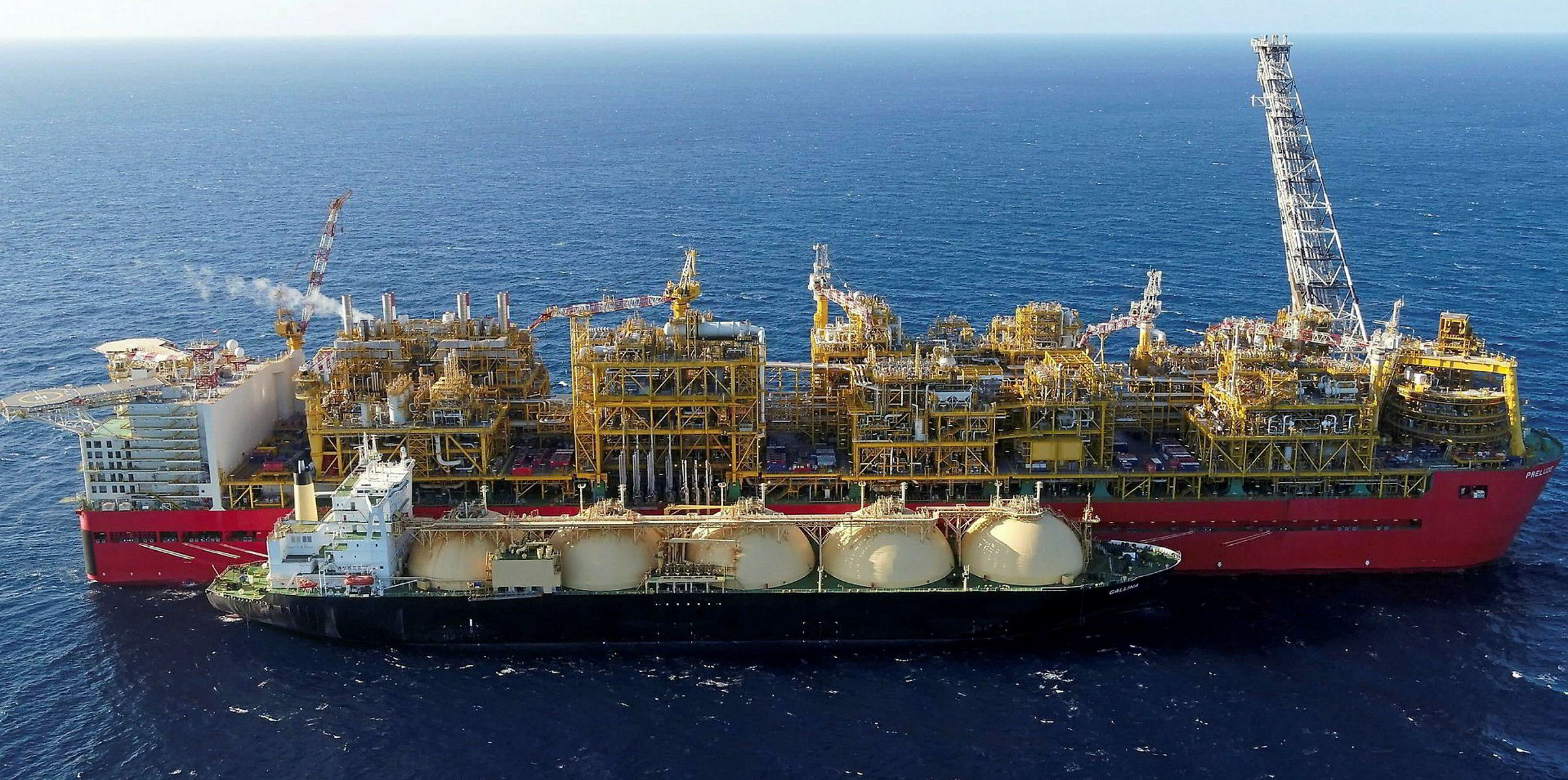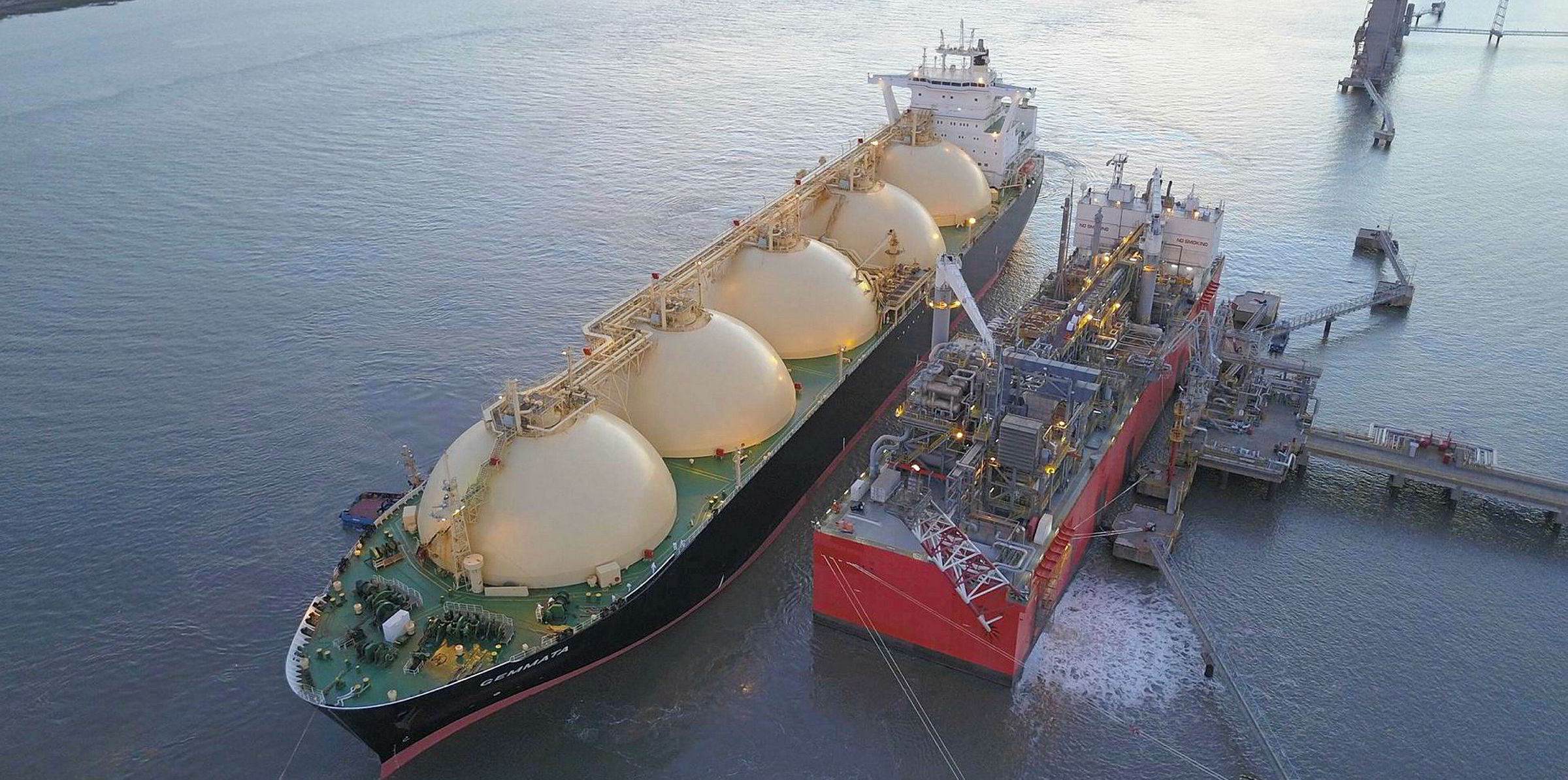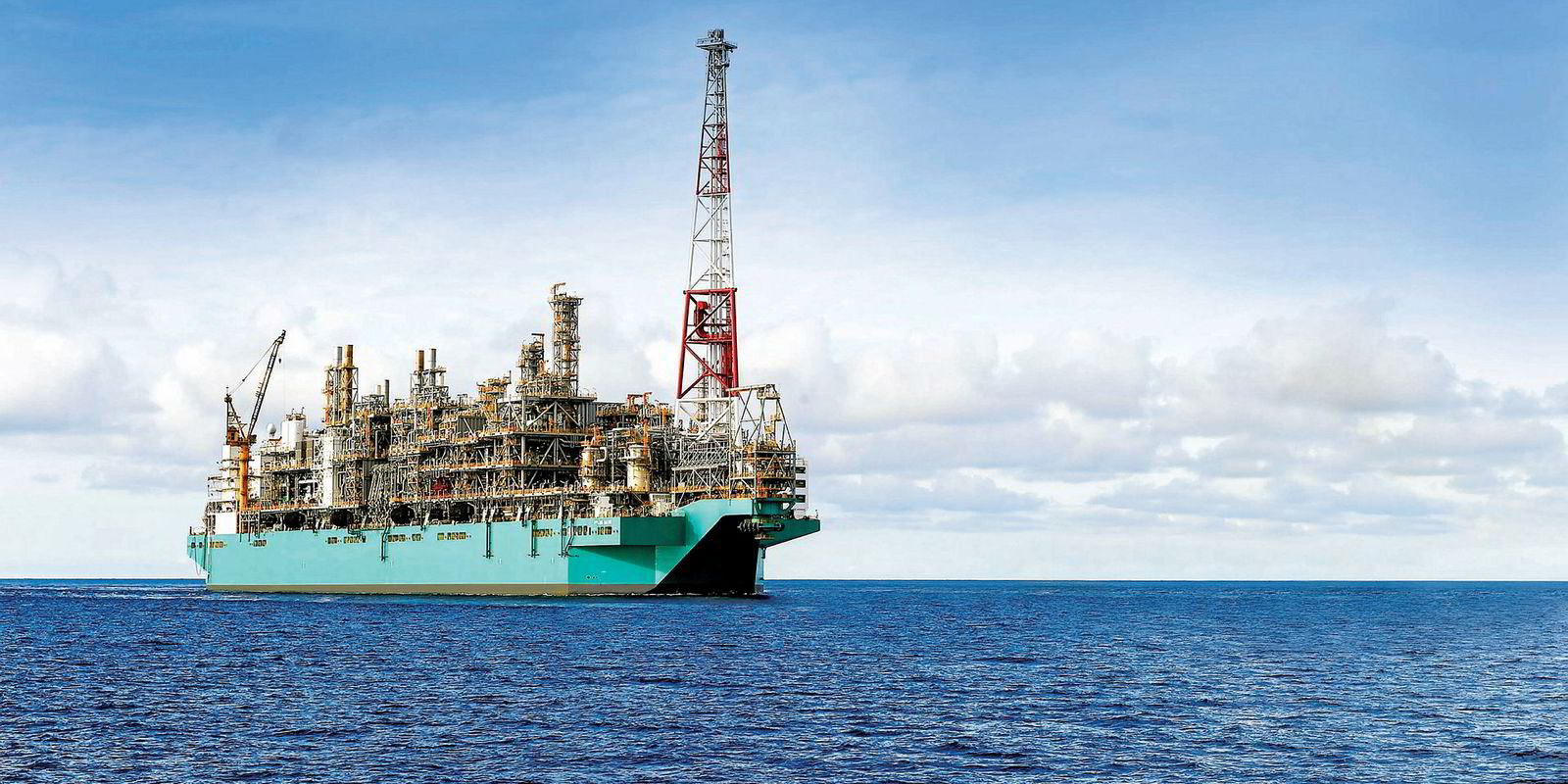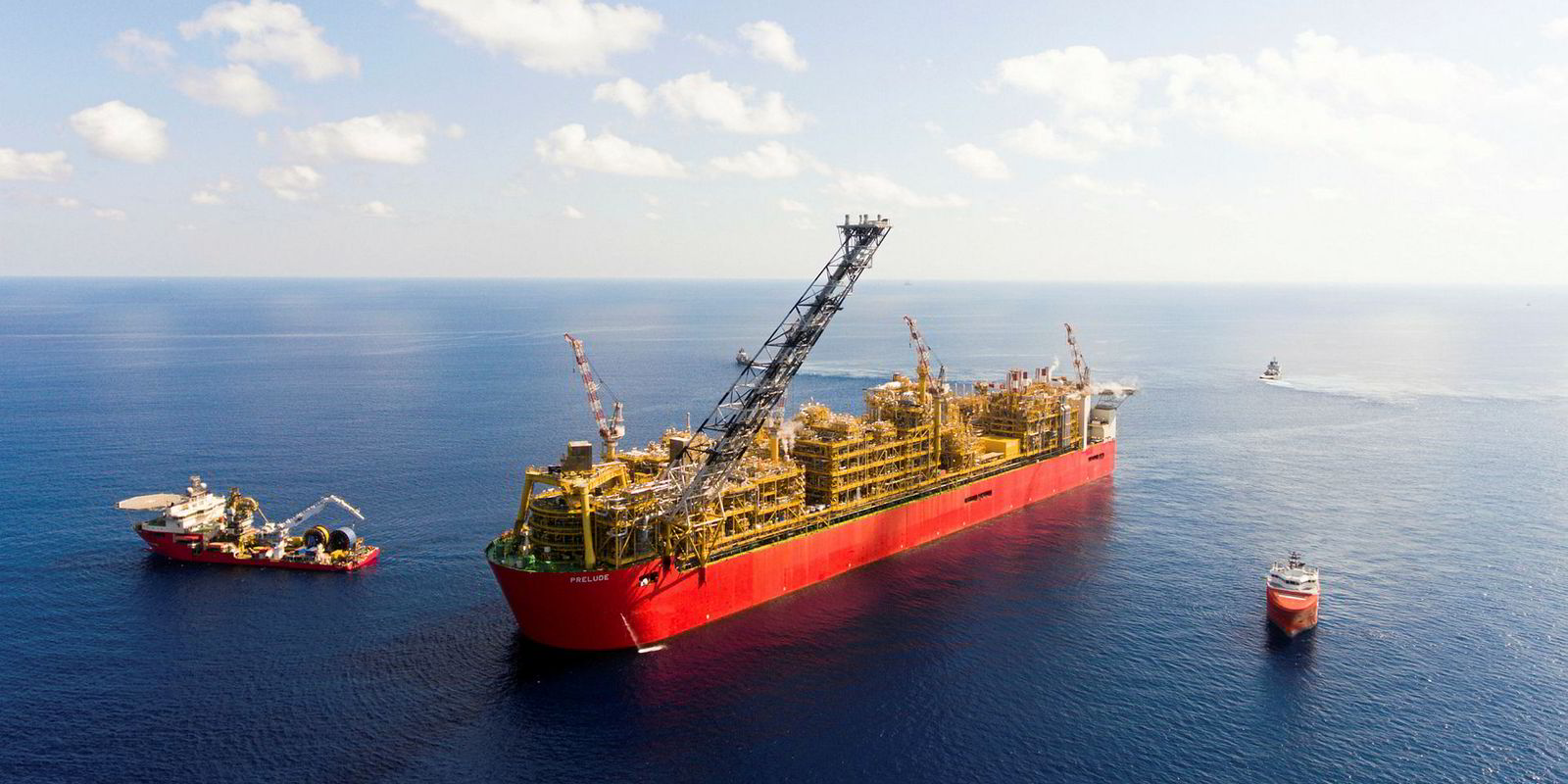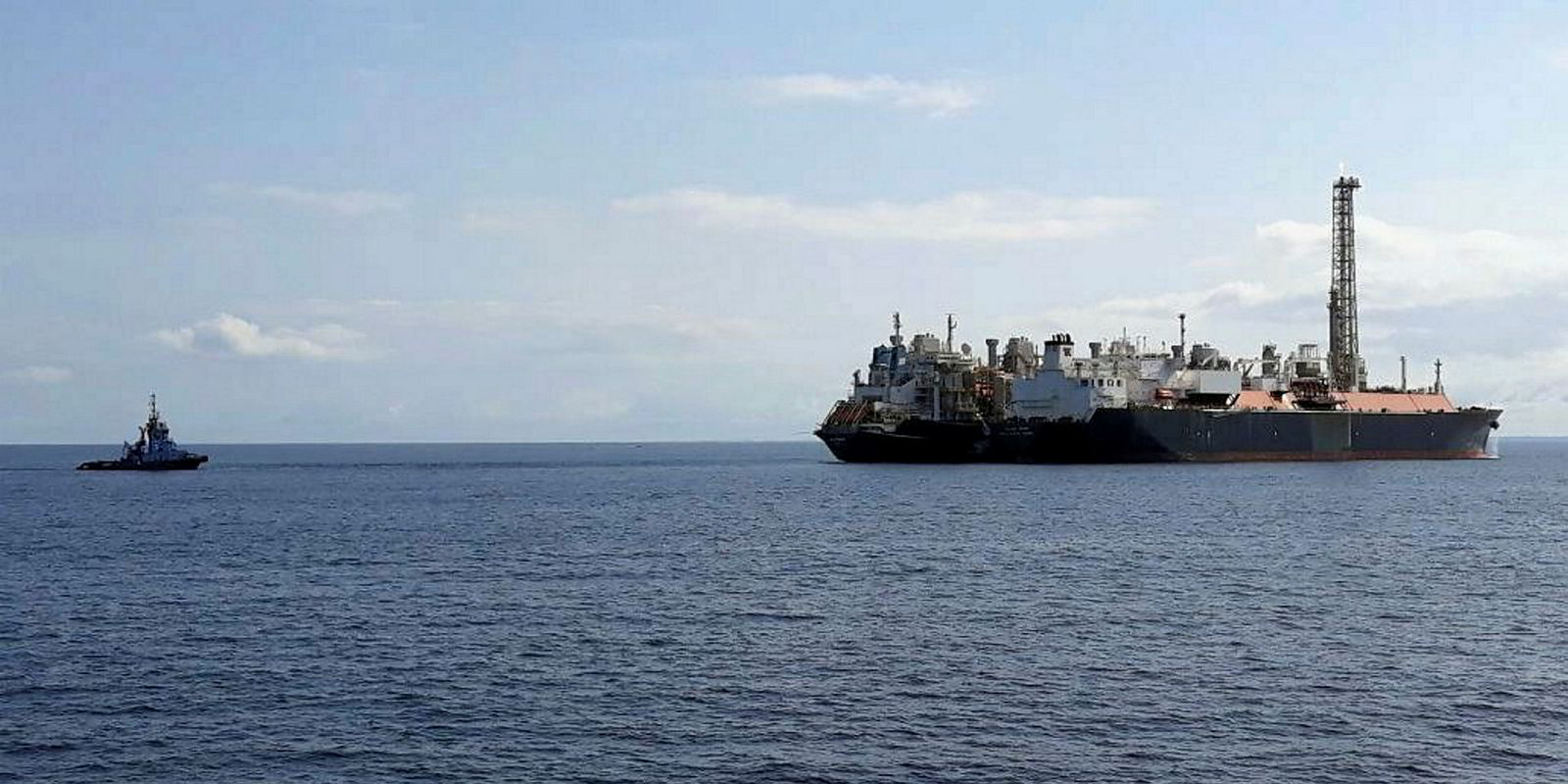Almost eight million tonnes per annum (mtpa) of the world's LNG production will be exported from four floating LNG (FLNG) production units by the end of this year.
Two of these — Shell’s Prelude FLNG off Australia, the world’s largest, and the Exmar-owned, YPF-chartered Tango FLNG in Argentina, at the smallest end of the scale — are exporting their first cargoes this month.
Tango FLNG’s first 25,000-cbm shipment filled a single tank on an LNG carrier, while over the weekend the 173,400-cbm Valencia Knutsen (built 2010) moored alongside Prelude FLNG off northwest Australia — as Shell flags up that a cargo is “imminent”.
But the other two units have got substantial export experience, producing and offloading more than 20 cargoes each.
Location flexibility
The world’s first FLNG unit — Petronas’ PFLNG Satu (built 2016) — off East Malaysia has also proved the concept of location flexibility for floaters after it was relocated to develop a second gasfield in the region earlier this year.
Off Cameroon in West Africa, Golar LNG's Hilli Episeyo — the world’s first LNG carrier-to-FLNG unit conversion — has been in operation for more than a year.
The next generation of FLNG units is already limbering up.
Two newbuildings are already under construction, and Golar is repeating its conversion model by transforming the 126,277-cbm Gimi (built 1976) into an FLNG unit for energy major BP's Tortue project off Mauritania and Senegal.
Between them, these three upcoming projects will boost global FLNG production to more than 15 mtpa by 2022. But this remains just a fraction of the 319 mtpa of LNG produced globally in 2018.
Contractors are reporting a growing interest in FLNG based on the large volumes of stranded gas that have been identified, and a strong push from developers to monetise these.
But with cheap onshore supplies readily available, particularly among the vast shale reserves of the US, building specialised FLNG units to access offshore fields might seem an unnecessary hurdle to outside observers.
There’s interest. But the question is can people do it? The ones that can without much effort are likely to be the big energy companies
FLNG developer
However, using FLNG for certain size projects can prove more competitive, according to some developers.
Spectrum of scale
One expert from contractor Black & Veatch, which built both the Hilli Episeyo and Tango FLNG, says there is a band of interest around units of between two to three-mtpa capacity, which would be capable of monetising around one trillion to two trillion cubic feet of gas.
There are outliers at both ends of the spectrum. Some developers are looking at small-scale solutions similar to Exmar’s in Argentina, while at the other end there is a project for a five-mtpa unit.
Developers say small to midsize units have another advantage in that their smaller capacities may mean the offtake can be sold to a single buyer, potentially making financing less complicated.
Prices for FLNG units vary hugely and, in some cases, have proved particularly opaque.
Golar has been upfront that its Hilli Episeyo job cost $1.2bn and was delivered on time. In contrast, Shell has never given any costing or time frame for its Prelude FLNG, which has taken eight years to put into operation, with reports that costs are closing in on $19bn.
Tango FLNG is costed at $350m, which for its 0.5-mtpa capacity gives a $500-per-tonne to $600-per-tonne production price for its LNG that is comparable with product from some onshore plants.
Those who have worked on FLNG projects stress the need not to over-complicate them.
They cite factors such as metocean conditions, gas specification and associated liquids production, which will likely push up the costs and complexity of FLNG projects.
There are other technical issues to be assessed.
Technical issues
Benign ocean conditions or dockside locations mean there are less factors to consider for loading and discharging operations, making side-by-side vessel configurations a natural choice.
Tandem offloading has yet to be trialled on a working FLNG project. But mooring-line problems with the two LNG carriers, which shipped in the cool-down cargoes to the Prelude FLNG, have led some to suggest that future projects in true offshore locations will offload using this configuration.
Looking at the next raft of projects, would-be developers say FLNG units will typically be newbuildings, with a small place in the market for conversions. But they add that financing will likely be a key issue.
“There’s interest,” one developer said of FLNG units. “But the question is can people do it? The ones that can without much effort are likely to be the big energy companies.”

